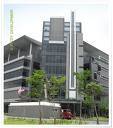
WHEN opening a recent real estate seminar, Penang Chief Minister Lim Guan Eng expressed concern that young professionals and mid-level managers are finding it difficult to buy living quarters.
This was, of course, not a “Eureka” statement as many others have said it.
But it was important that he said it as the chief minister’s post is what the American media refers to as a “bully pulpit” that lets the occupant speak out and be listened to. It should set the agenda for state and local council leaders and civil servants to focus on this issue. Equally important, it should also tweak the consciousness of developers and their professional consultants.
It is useful to recall that in the early 1970s, college trained teachers, earning about RM400 a month and aided by government housing loans, were the main buyers of double-storey houses costing between RM25,000 and RM30,000 in Island Glades which has turned out to be a choice middle class housing area. Other buyers were mid-level management workers and professionals.
Today, young graduates earning from RM2,500 to RM3,500 a month in Penang Island do not think of landed properties anymore, even if their spouses earn similar salaries. Their combined income of RM5,000 to RM7,000 a month can only allow them to buy houses of RM300,000 to RM400,000, that is, if they have saved between RM30,000 and RM50,000 for down-payments or are lucky enough to have parents who can and are willing to contribute.
The double-storey terrace houses in Island Glades are selling from RM500,000 to RM700,000 each! Most new landed properties in the Northeast District of Penang Island are in three-storey format costing about RM800,000! Semi-detached variety costs more than a million ringgit.
Young middle-class house buyers have settled for apartments in high-rise buildings, unless they want to stay in Seberang Perai.
But living in the less attractive mainland part of Penang is a poor alternative as long as commuting between the two parts of the state is not seamless. The inefficient ferry services and the usually congested Penang Bridge do not help.
It is getting very difficult for Penangites to find apartments of about 120 sq m on the island selling for less than RM400,000. For some reasons, including development control standards and guidelines, developers have chosen to build large apartments with prices above RM600,000.
Those in choice areas, such as Gurney Drive, cost above a million ringgit.
Despite the good intentions of politicians, the power and resources of the state government and Penang Island Municipal Council (MPPP) are limited. They do not have large land banks to be active developers or the power to control prices.
Their main role in the housing industry is in regulating development. Under the best circumstance, they facilitate developers to build the type of houses needed by the people and at prices they can afford.
But the existing circumstances are not ideal. Politics and sectional interests can interfere with rational decision makings.
Making things more difficult, existing policies related to housing are not useful. For example, the housing policies in the Rancangan Struktur Negeri Pulau Pinang 2020 are largely “pie-in-the-sky” feel-good statements that are also applicable to Perak or Timbuktu.
Furthermore, many town planning and building standards and guidelines governing development control decisions were formulated decades ago.
An important agenda is to review the standards and guidelines to be in tune with the realities of the housing situations today and new development ideologies, such as sustainability. Height control is important to shape an attractive urban landscape.
More specifically they should facilitate and promote the building of housing units of 100 sq m to 120 sq m and selling for between RM300,000 and RM400,000.
Hopefully, developers can also be persuaded to abandon the practice of providing swimming pools, Jacuzzis, “libraries” and other facilities that require huge budgets to maintain. What is seriously needed is having ample parking space until the days when Penang has a public transport similar to that of European cities.
The task is urgent. The new members of the middle class, the back-bone of the labour force, are having problems housing their families. Under such circumstances, the clarion calls of Klang Valley and other metropolis can be and have been persuasive.
If the situations continue, making Penang the engine of growth will be adversely affected.
Besides, the island must not become just the favourite place of retirees and tourists.
Source: The Sun 2 June 2009
.jpg)

No comments:
Post a Comment